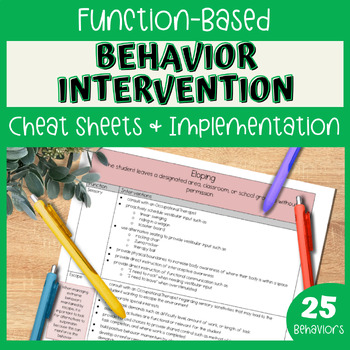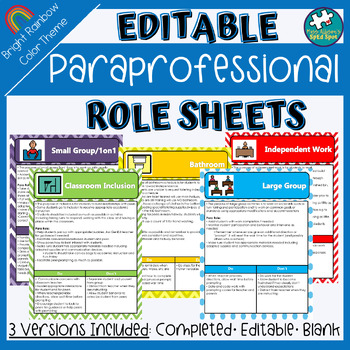
As we transition into September, it's important for elementary special education teachers to carefully plan and prepare for the months ahead. September provides a prime opportunity to set the tone for the rest of the academic year. We started laying the foundation in August ( see that post here ) but there are still some essential steps to continue establishing routines and introducing skills. ...

Having a plan when heading into a new school year in the elementary special education classroom is essential to setting your year up for success. It reduces anxiety, establishes routines, and provides guidance for paraprofessionals. Let's face it... in August the days are LONG! Especially without related services pulling students yet. And your students have a lot to learn about being at school… especially your Kindergarten students and students transitioning to a new building or classroom. Don't worry! I have gathered some great ideas and resources to save you time and get you started off on the right foot this August! Click on an image or caption to find the resource in my TPT store ! ...

Comprehensive Literacy Instruction is essential in today's classrooms, including self-contained classrooms and cross-categorical resource rooms. In many cases, reading and writing instruction has fallen by the wayside for our most complex learners however the push toward implementing the Science of Reading in all classrooms emphasizes the need for a shift. ...

In my classroom and in my role as an autism & low-incidence disability coach, few days go by when I am not trying to decipher student behavior. After working with hundreds of students and thousands of educational professionals, I have developed a 5-step system for behavioral intervention that has worked really well. In today's post, I will walk you through each step to help you with solving problem behaviors that may be impacting student success in your classroom. ...

After all the talk about what students love during Valentine's Day activities, I always found a natural next step in my thematic units was to focus on feelings and emotions. Check out some of my favorite Emotions activities: ELA Ideas I first introduce feelings vocabulary. We use a variety of visuals including photos, icons, and even emojis. Next, we practice sorting emotions based on the vocabulary we've learned. These cut and paste worksheets are also included in my Feelings Thematic Unit . Then, we read stories to discuss each emotion in context. I love The Way I Feel by Janan Cain because it covers so many robust feeling words. I use the communication board from my Feelings Thematic Unit for students to participate. Another favorite feelings story is When Sophie Gets Angry-- Really, Really Angry by Molly Bang. I love this story for introducing the concept of coping strategies to my students. I love this story so much that I created an entire Picture Book Comm......

Last year I read a book that changed my entire outlook on teaching teaching to my students with significant disabilities and complex needs. Comprehensive Literacy for All: Teaching Students with Significant Disabilities to Read and Write by Karen Erickson Ph.D and David Koppenhaver Ph.D. is a MUST-READ for teachers in the self-contained classroom! It provides Science of Reading research specific to our students with significant disabilities and provides some practical guidance. ...

The holiday season is my absolute favorite time of year outside and inside of the classroom! My students and I always have so much fun celebrating the holidays. And the first holiday to kick things off will be here before we know it! Keep reading to learn more about how I celebrate Thanksgiving in my special education classroom....

Pumpkin carving is one of my favorite Halloween activities in my classroom but it definitely takes some planning! Here are my Top 5 Tips for Carving a Pumpkin in the Special Education Classroom. Tip #1: Consider Sensory Needs Sometimes a student may not be comfortable touching the pumpkin guts so you can allow them to use gloves or even put some in a ziploc baggy to let them explore in a less overwhelming way. Sometimes I had students who would absolutely gag at the sight of the pumpkin guts. I allowed them to do something else during that time like painting pumpkins or using stickers. This activity is not worth that much distress! Tip #2: Use Visual Supports We started by watching a video or reading a story about carving a pumpkin to preview the activity. Then, students completed this sequencing activity from my Halloween Thematic Unit to provide us with a visual step-by-step guides with clear pictures and text to help students understand the carving process. Tip #3:......

In my classroom, I used Unique Learning System for a majority of my curriculum. However, I found that I often wanted to supplement the stories with rich, authentic picture books. So my Picture Book Communication and Comprehension Supports units were born! Not familiar with my picture book supports? They include: Communication Supports Vocabulary Cards : to teach and assess targeted vocabulary (can also be used to create interactive games!) Communication Board : to generate sentences about the story verbally or through velcro manipulatives GoTalk 9+ AAC Board : formatted for use with GoTalk 9+ Comprehension Supports Differentiated Wh-Question Assessments : 3 leveled assessments (multiple choice pictures, multiple choice words/phrases, fill-in) for answering who, what, where, when, and why questions about the story. Fill-in-the-Blank Sentences Worksheet : Cut-and-paste cloze sentences with picture choice options Sequencing Worksheet : Picture-based cut-and-paste sequencing of story......
Subscribe to:
Posts (Atom)






